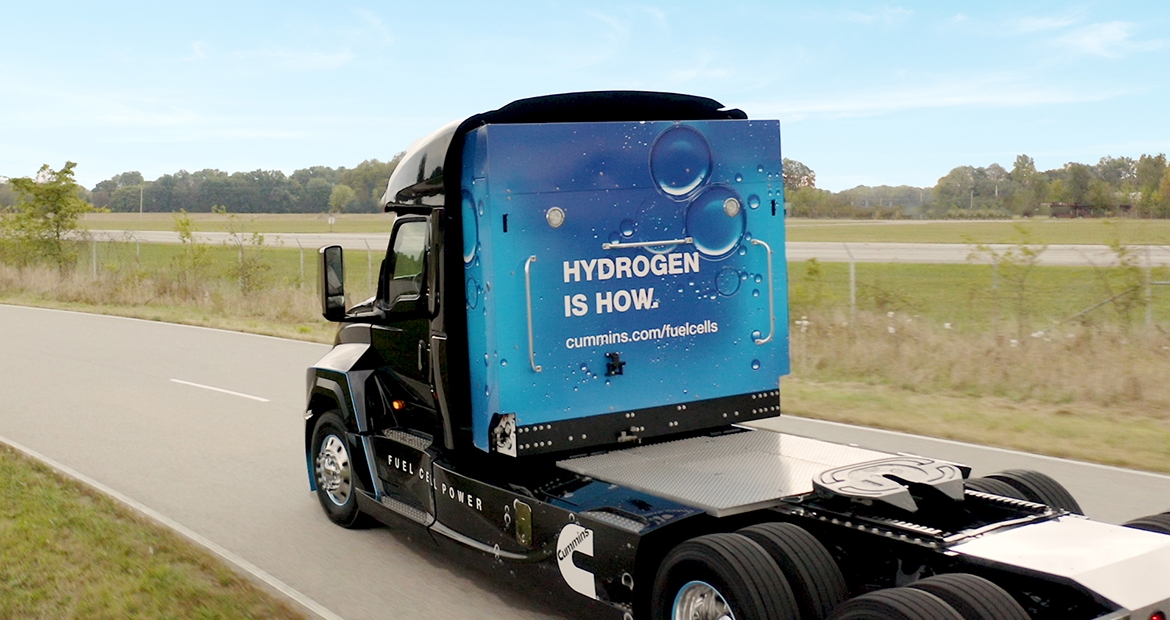Electricautonomy: “Canadian hydrogen fuel cell technology powers thousands of buses and heavy trucks around the world. Now experts say our economy, energy markets, and domestic fuel infrastructure could be aligning to put more on the road in this country.”
Last year marked two significant turning points for Vancouver-based Loop Energy, a 19-year-old firm that has developed hydrogen fuel cell “range extenders” for short- and long-haul trucks. The company secured its first commercial sale of the product in China and then completed a deal to sell a minority stake to Cummins, a global manufacturer of diesel and alternative energy drive trains.
Last month, the run continued, when Loop secured another long-term contract in China, to support the conversion of Nanjing’s municipal bus fleet to hydrogen.
To date, those well-known firms have mostly found lucrative markets elsewhere, a trend reinforced this week with the European Commission signaling that it intends to invest billions of euros in hydrogen technology and infrastructure as part of its economic recovery strategy.
But some hydrogen watchers say the stars are also aligning here — as the economy, technology, carbon taxes, and volatile energy markets have converged on a point where some forms of hydrogen for truck and bus fleets are cost-competitive with diesel.
They also say that if the federal government is looking for new and cleaner markets for Alberta natural gas and Ontario surplus clean-grid electricity, hydrogen derived from both represent viable ways of greening the transportation sector.

Most industrial-grade hydrogen is produced from steam reforming of natural gas, as well as a by-product of some manufacturing processes, like cement production. Electrolysis, the use of power to separate water into its component elements, is the other method but tends to be more costly and only yields energy-grade hydrogen if the electricity is under four cents per kilowatt-hour.
Because of the weight and life-span of vehicle batteries, hydrogen-powered drive trains are more effective in heavy fleet vehicles that can re-fuel at centralized depots, says David Layzell, a director of the Canadian Energy Systems Analysis Research initiative at the University of Calgary. “The transportation companies don’t want plug-in electric because it takes too long.”
With large-scale OEMs like Cummins, Volkswagen and Alstom now investing in hydrogen drive train components for buses, trucks, and trains on a commercial basis, it seems clear that Canadian policy-makers should be focused on the other half of the famous chicken-and-egg dilemma: the production and distribution infrastructure required to deliver the hydrogen to operators.
Sharpe points to the federal government’s 2040 goal of having an entirely electric vehicle fleet. “Canada is signaling that it’s very serious about transitioning the vehicle landscape,” he says. Natural gas infrastructure for creating hydrogen and sequestering carbon “is really a way to flip the script.”
